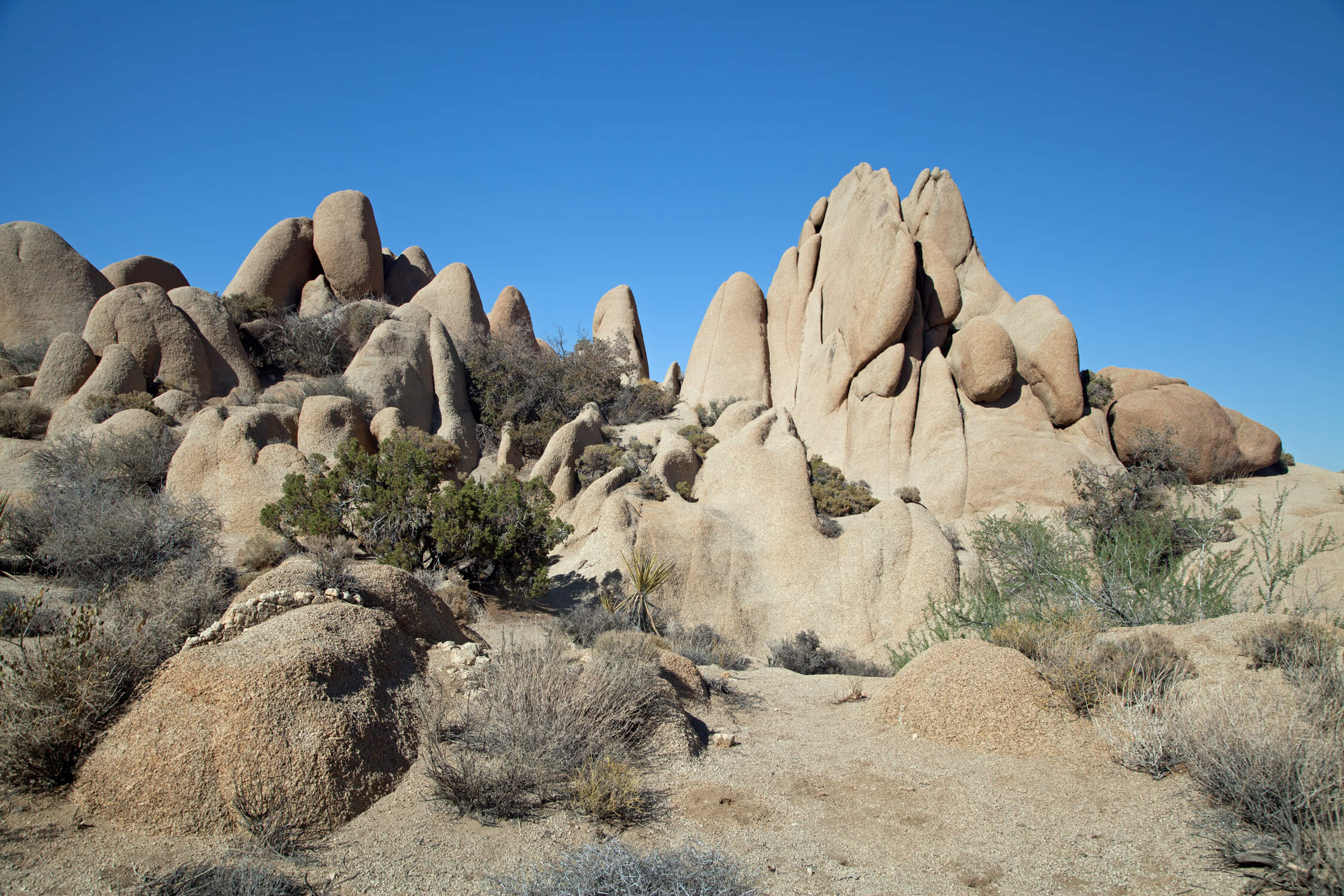Joshua Tree National Park
Located: California - Established: October 31, 1994
The Park: Joshua Tree is divided into distinctively different desert zones – The Mojave “high desert” and the Colorado “low desert” – two arid ecosystems with exceptionally contrasting appearances. The Joshua Tree, for which this park is named, thrives within the high desert Mojave zone above 3000 feet.
According to John C. Fremont, an early explorer of the west, the Joshua Tree is “…the most repulsive tree in the vegetation kingdom.” The fact is, the Joshua Tree isn’t really a tree at all, but an oversized yucca. It resembles something you might find in a Dr. Seuss book.
I've got to go along with Fremont's assessment of the Joshua Tree!
If the Joshua yucca’s affect you as much as they did Fremont, perhaps you will find joy scrambling about the fascinating granite boulders that take on a variety of unusual shapes. Skull Rock (pictured below) is one of the more intriguing features located near the Jumbo Rock Campground. Massive rock formations make this park very popular for rock climbers of all abilities.
Skull Rock located in he Jumbo Rocks district.
However, if unusual plant material captivates your imagination, be sure to visit the Cholla Cactus Garden. From a distance, these desert plants appear to be cuddly teddy bears. Up close, these spiny monsters will literally jump at you and attach themselves to your leg! Observe them…but keep your distance!
During the spring blooming periods, the spindly Ocotillo and a variety of desert wildflowers add color to this desert landscape.
Getting there: Located in Southern California, the west entrance into Joshua Tree is 37 miles from Palm Springs off I-10 or 27 miles to the south park entrance from Indio, CA.
When to visit: A visit to Joshua Tree National Park in the summer can be as inviting as vacationing in a pizza oven. Summer temperatures can be extreme; however, there will be plenty of campsites available! Winters can bring about freezing nighttime temperatures. The best time to visit Joshua Tree is in the fall or spring.
What to do: Joshua Tree offers a wide variety of things to do including camping, rock climbing and bouldering, mountain biking, horseback riding, backpacking, wildflower viewing, geology motor tours and more. As for hiking, the park offers an extensive network of hikes of varying length from short nature walks to long, stenuous treks about Dr. Seuess’s strange trees!
Camping at park visit #3 - Jumbo Rock Campground
Where to stay: There are no lodges inside Joshua Tree; however, there are 9 campgrounds with over 500 developed camp sites. Most sites are available on a first come, first served basis. Water is scarce at Joshua Tree so it is recommended you bring your own, although a few of the campgrounds do have running water. There are no RV hookups at this park.
With over 600,000 acres of wilderness within the park, the backcountry camper will find plenty of solitude and enjoy the gentle call of the wild!
CharlieDog avoiding flies!
Memorable moment: Camping with our Old English Sheepdog!
Trivia: Joshua “trees” do not have growth rings like an oak or pine. They are estimated to grow at a rate of ½” to 3” per year. Based on height, researchers think an average lifespan for a Joshua tree is about 150 years, but some of the larger trees may be much older than that.
Banner: "Teddy Bear" Cholla Cactus Garden
Experience these Check List:
- Stop by any of the park's three main Visitor Centers - Oasis, Joshua Tree and Cottonwood
- Climb about Jumbo Rocks
- Visit the Cholla Cactus Garden
- Drive out to Keys View
- Hike a Nature Trail
- Take the Geology Motor Tour
Sunset at Joshua Tree
Fascinating rock formations
Mutant Totem Pole Joshua Tree








